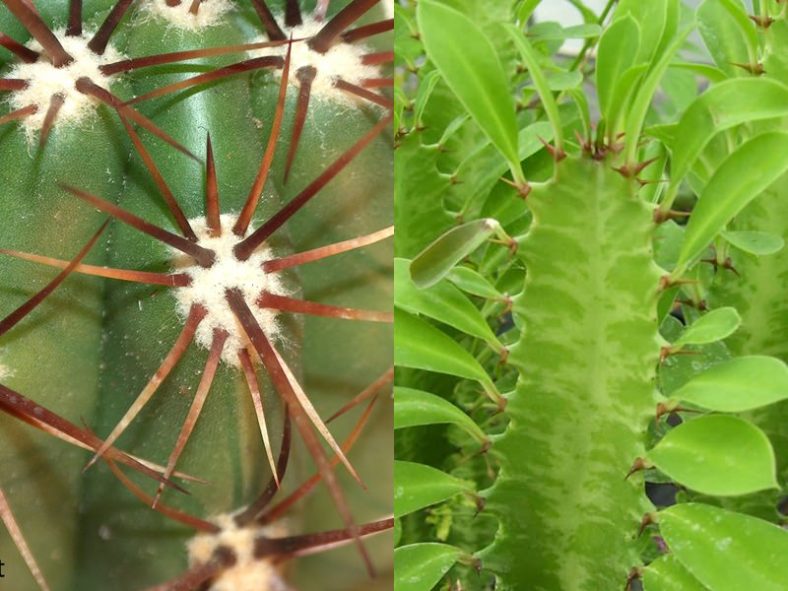To completely confuse you in the first sentence, cacti are actually succulents!!!
"How is that?" you ask. Let me explain.
Succulents are a group of plants that are identified as having cells in parts of their body that retain water:
- Some plants have these cells in their roots, such as those from some species of the Euphorbia genus.
- Others have them in their stems, like some Stapeliads and species from the Pachypodium genus.
Cacti also possess this ability, which is why they are classified as succulents. It is similar to the saying, "All German shepherds are dogs, but not all dogs are German Shepherds." Likewise, all cacti are succulents, but not all succulents are cacti.
So, what defines a cactus?
All cacti belong to the Cactaceae family, and many characteristics identify a plant as belonging to this family. But spines are not one of them!
Do not get fooled into thinking that a cactus is a cactus just because it has spines. Many succulents with spines are not in the Cactaceae family, such as some Euphorbias and Agaves. On top of that, some cacti do not have spines at all, like most Lophophoras.

What defines true cacti are areoles. Areoles are where spines, glochids, branches, and flowers may sprout, and all cacti have them, while succulents other than cacti do not. Areoles are not hard to find. They usually look like small, fluffy, cotton-like lumps on the body of the cactus.
So, the next time you look at a succulent, see if it has areoles. Then, you will know for sure whether it is a cactus or not. Remember, though, that there are exceptions to every rule, and cacti are the hardest of all plants to identify. Therefore, be prepared for extensive research and be patient if you wish to identify your cactus species.
Source: fickleprickles.com.au
Links
- Succupedia: Browse succulents by Scientific Name, Common Name, Genus, Family, USDA Hardiness Zone, Origin, or cacti by Genus